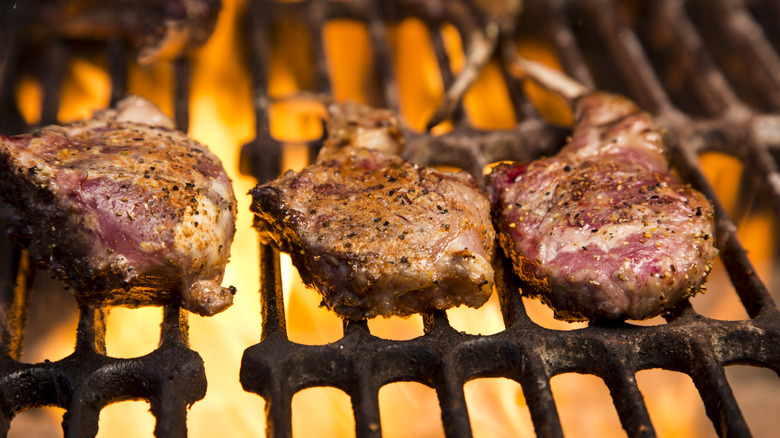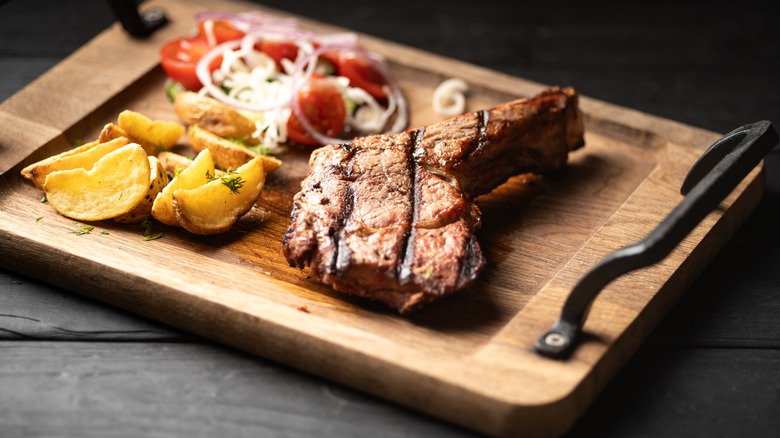The Essential Step To Take When Preparing Lamb
One of the biggest mistakes foodies make when cooking lamb is to not let it rest. It might seem like a simple, even throwaway move, but it's a step that cannot be skipped for a moist, flavorful chop. Meat loses a significant part of its weight during cooking due to the escaping moisture. Meat cooks from the outside in, so as the heat rises through your lamb, the muscle fibers tighten, becoming narrower and — alongside evaporation — forcing the liquid to the surface of the meat. During resting, the structure of the meat relaxes as it cools, allowing the muscle tissue to hold in the remaining juice. Whether you're grilling cutlets, roasting a leg of lamb, pan-searing lamb chops, or cooking a whole lamb roast, you've gotta give it a rest.
Resting lamb improves both the flavor and the texture, and it's crucial regardless of your chosen cooking technique. As your meat stands away from the heat, its juices redistribute throughout the cut, resulting in a juicier, more flavor-packed cut. Resting can be especially important if you're cooking your lamb to a higher temperature, as the longer it cooks, the firmer and more set those proteins become. Plus, not only is evenly spread moisture a good thing, but it also means all those unabsorbed juices won't just spill out onto the cutting board when you slice your lamb post-cook, always making sure to cut against the grain.
Give it a rest, man
To properly rest your lamb, remove it from the heat once it's fully cooked and loosely cover or tent it with foil (too tight and it'll sweat). Then, transfer it to a warm platter where it can hang out until it's time to slice and serve. The golden rule is 1 minute of resting per 100 grams of meat, but in general, larger roasts should rest for 10 to 20 minutes. Smaller cutlets and chops will only need a shorter 5 minute rest.
From there, grab your meat thermometer. For medium-rare lamb, pull it from the heat when the meat has reached an internal temperature of 135 degrees Fahrenheit. It'll continue to rise to 145 degrees as it rests, which is the ideal temp for serving. For medium, pull it at 150 degrees (it'll rise to 160), and pull it at 160 degrees for a well-done cook (which will rise to 170 after resting). Allow the meat to rest for at least three minutes, even if you're going for a pinker, rarer temp in your lamb recipe.
So, what are you supposed to do while your lamb rests? Step out of the kitchen, pour yourself a glass of wine or a cup of coffee, light a candle, call up a friend and invite them to dinner, what are we having, oh lamb actually, wow that's so impressive you shouldn't have gone to all that trouble, oh it was nothing, really...

